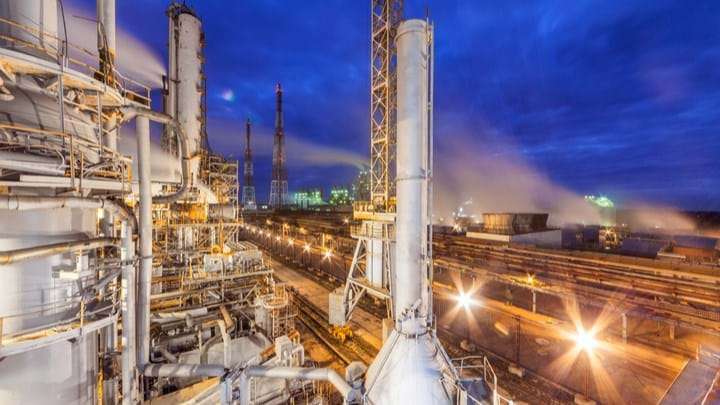Redundant Asset Management Planning

REDUNDANT asset management planning is often – due to the very name of the topic itself – viewed by chemical manufacturers in a negative light. The fact that an asset has reached the end of its economically-viable life, suggests that the exercise will be fund-draining rather than income-generating, which is hardly a motivating stimulant for any ensuing works.
Yet the catalyst for devising a redundant asset management plan is not always identical from one site to the next.
Admittedly, the chemicals industry is continuing to encounter difficult times. Headlines have widely reported on growth "gloom" in Germany, for instance, so rationalisation of assets could be imminent for some operators if the trend continues. Reports of a global economic slowdown and an extended US-China trade war will also inevitably contribute to ongoing volatility.
Elsewhere, more positive headlines cite rising demand for green chemistry, for instance, which seemingly presents new-found opportunities for manufacturers, particularly in parts of central Europe. An upgrade or overhaul of assets may therefore be required to meet more sophisticated environmental requirements, hence a more encouraging driver for next-step asset decision making.
The global chemicals landscape is dynamic – much like any other business environment – meaning it would be irresponsible to make sweeping statements. But, the need to understand the scope and importance of redundant asset management planning cannot be ignored.
Let's look at five key issues to consider.
1. Dedicate time to the exercise
Whether the plan is to remove an asset to create space for next-generation technology or clear a site so that it can take on a new lease of life entirely, a sense of urgency is perhaps understandable, especially if end-of-lease or permitry dates are looming. However, knee-jerk decisions often result in jeopardising safety, the environment, or budgets, before the project has even begun.
The clue is therefore in the title of the exercise – it needs to be planned, not rushed. A decommissioning scheme must be viewed as a major and serious engineering programme, which requires evidence-based feasibility and options modelling to be carried out, before the best-fit route map can be devised.
The chemicals manufacturer needs to gather detailed data about the structure, capacity, condition and residual hazards of every component, and there are also various critical path steps to accommodate, including permit surrenders, EHS and compliance requirements, regulatory constraints/obligations, isolations, re-routing and so on.
With accurate drawings, maintenance reports and survey findings, this process can typically take 3–6 months depending on the scale and complexity of the plant, but in the absence of the data required, it has been known for in excess of two years to pass before a decommissioning plan can be defined and agreed.

2. Understand human resource requirements
At present, the contractor supply chain is extremely stretched – decommissioning represents a somewhat niche area of engineering, and the number of major industrial decommissioning programmes currently underway, globally, is high. Dozens of coal-fired/fossil fuel power stations are being demolished worldwide, for example, to pave the way for sustainable energy-generation technologies.
This adds pressure to what is already a significant challenge – assembling a competent project team to manage what happens next to the redundant asset.
Decommissioning is a complex discipline that requires a defined skill-set in order to execute these high-hazard programmes safely. Usually, the most proficient team will include a combination of external decommissioning experts as well as in-house individuals with site- or process-specific knowledge. Nobody knows the asset better than the person who has operated it for (what can sometimes be) 40 years.
Such ‘knowledge engineers’ commonly possess unquantifiable levels of IP, but they can prove hard to retain when news of a site closure or rationalisation has been announced. Younger employees are often quick to look for alternative employment, whilst more mature people may accelerate their retirement plans. Early communication with these individuals is therefore crucial, as is the need to take steps to ensure their retention – or at least information extraction.
At a chemicals site in West Yorkshire (UK), a project was delayed by around 18 months because decades of human resources had been lost. Investigatory works had to go back to basics to uncover the level of detail required to make safe, informed and commercially-sound decommissioning decisions. The value of employees therefore cannot be underestimated, even following the cessation of chemical manufacturing itself.
3. Scope out the project schedule
Sometimes these difficulties associated with assembling a competent team mean that the project schedule will need to be adjusted accordingly. Corners cannot be cut simply because experienced engineers are working on sites elsewhere.
That said, it may be possible to bring in a contractor who will be closely managed by an appropriately experienced consultant, if delays prove difficult to accommodate. This is one of the reasons we were appointed to oversee a decommissioning project in Canada, for example, where potentially explosive products had been left in a shut-down fertiliser plant.
That said, other contributing factors can affect the amount of time required to conduct preparatory works. Drone technology can often provide a helpful inspection aide, for example. These unmanned aerial vehicles (UAVs) can be flown over an installation – and in some cases deep into specific structures – before people need enter any vessels or work at height themselves. The convenience and safety benefits associated with this clever use of technology should not be underestimated. It is far better to lose a drone than for a single person to suffer even a minor injury on-site.

4. Consider an asset’s true resale potential
The careful decontamination, matchmaking, disassembly, and sale of assets for re-erection elsewhere, is not unheard of throughout sector-wide manufacturing environments, and the world of chemicals is no different. RVA has previously overseen the careful dismantling of a 4,500 t ammonia plant shipped overseas from the UK to the Far East.
Pursuit of a buyer, as an initial strategy, is understandably a priority for asset owners who have invested >£300m in their plant – it is hard to relent that it is nothing more than scrap metal. However, in most cases, the time and energy invested in potential resale exercises is wasted. The cost of refurbishing and relocating the asset – on top of fees associated with the baseline decommissioning works themselves – soon eat into any potential project margin. Delays incurred whilst trying to find a buyer and negotiate also contribute to excessive site security, maintenance, leasing, permit and other holding costs, which further erode any revenue generation potential.
There are exceptions, as the aforementioned project illustrates, but it is important to acknowledge that multiple assets worldwide have laid idled for years and become nothing but a mounting liability for the owner, in the hope of finding a buyer that may never materialise – many a scrap skip lies testimony to this asset retirement route.

5. Remember CSR pressures
Community involvement can be overlooked when these often complex projects start to unfold, but communication with all project stakeholders is paramount.
Local authority departments including building control, Environment Agency, enforcement agencies, permitry organisations, local occupiers, resident and pressure groups all often have an interest when it comes to a plant closure – so proactive engagement is invariably the way to go.
From a wider environmental perspective, it is also important to note that certain materials are proving increasingly difficult – and expensive – to dispose of. Hazardous waste management contractors are permitted to only accept specific volumes of mercury and polychlorinated biphenyl at any one time, for example. The responsible and compliant disposal of these wastes will therefore also contribute to the cost management and scheduling of a redundant asset project.
Recent Editions
Catch up on the latest news, views and jobs from The Chemical Engineer. Below are the four latest issues. View a wider selection of the archive from within the Magazine section of this site.




